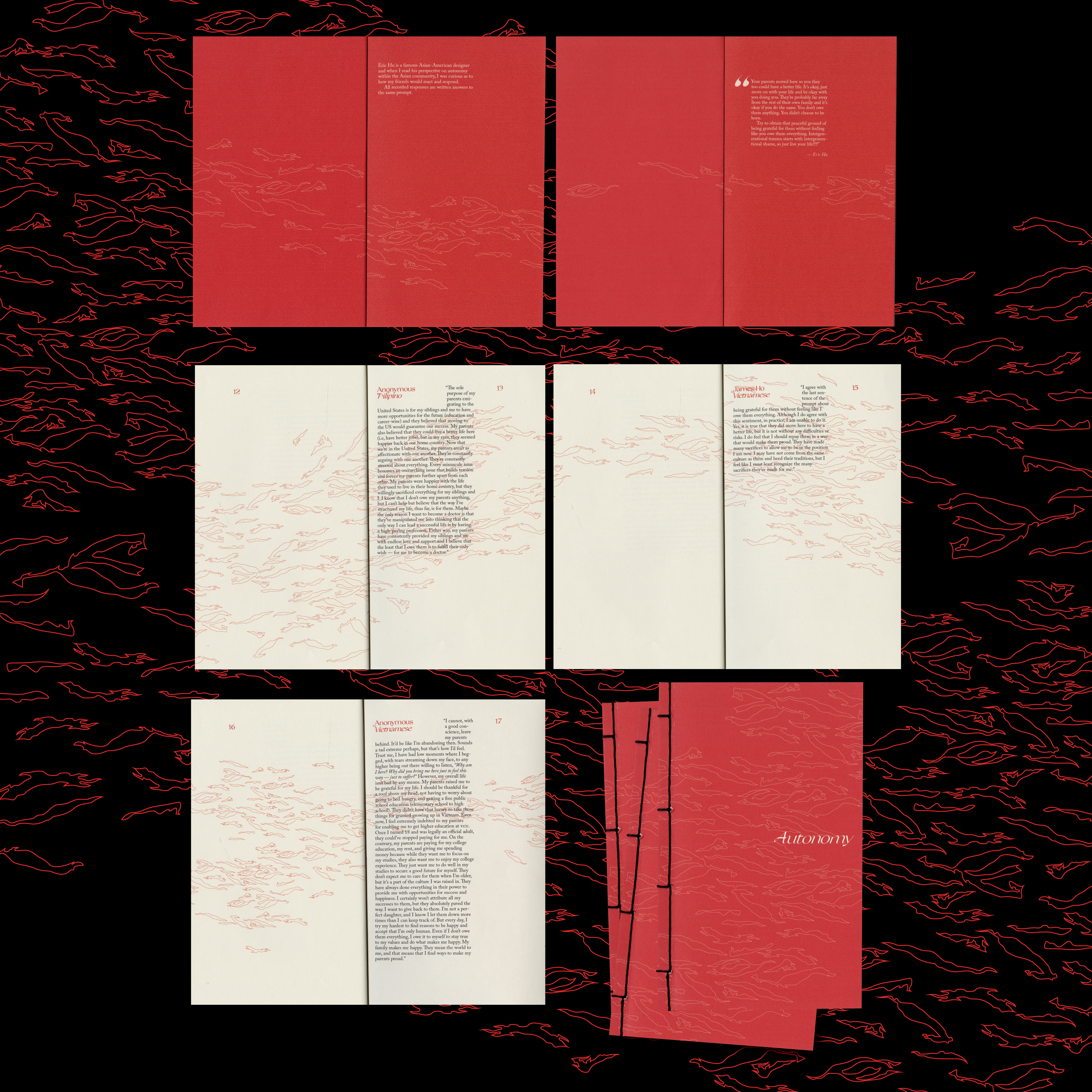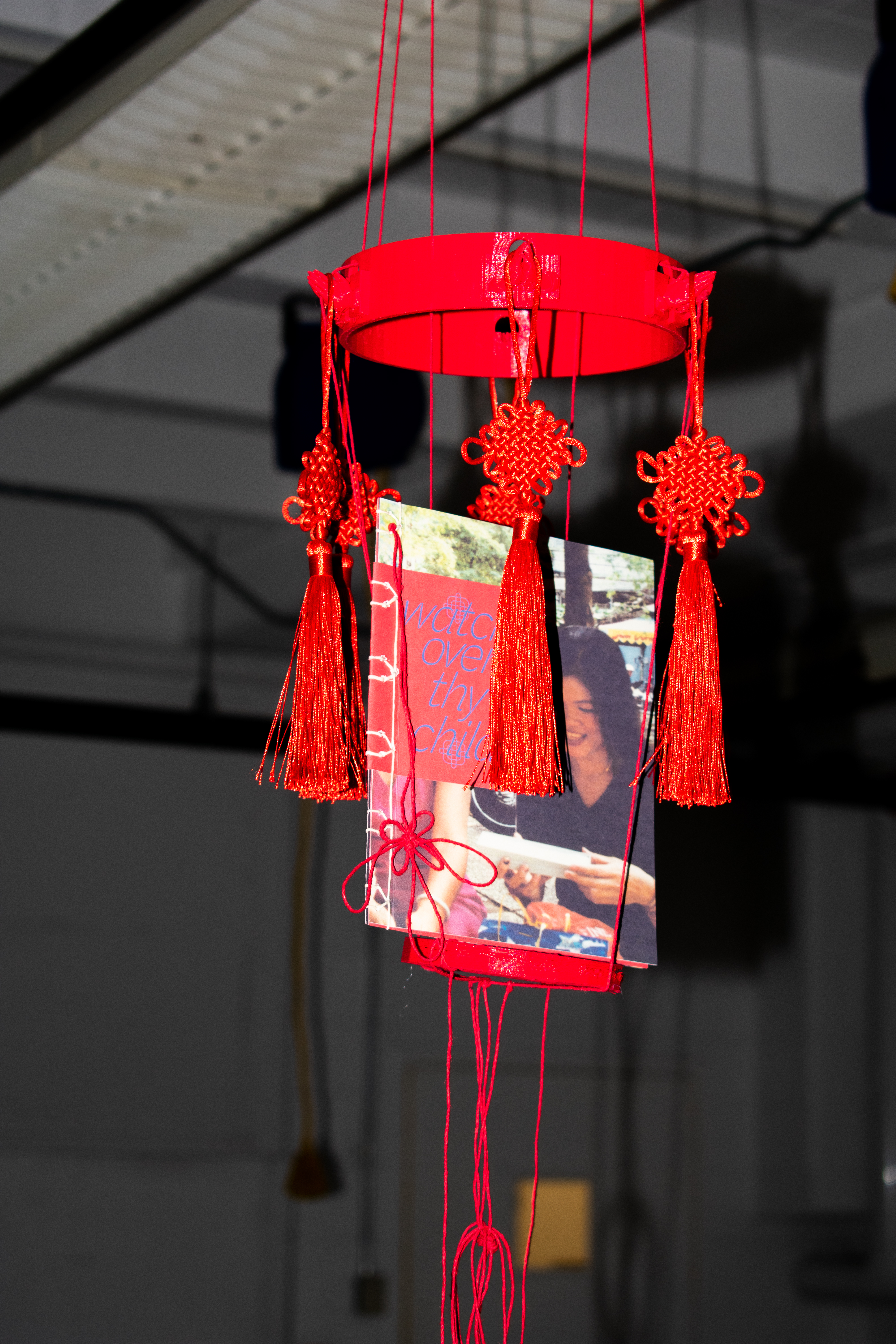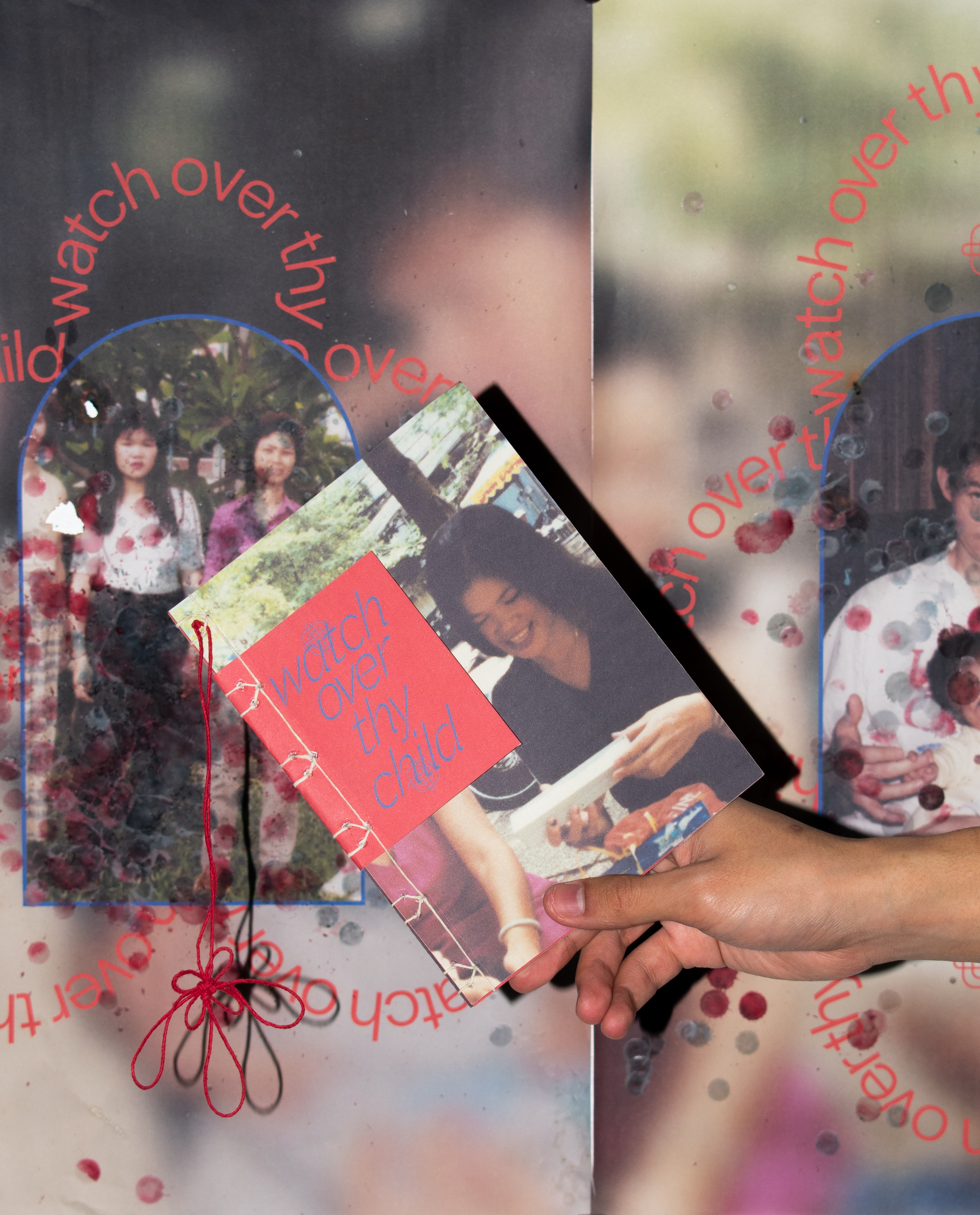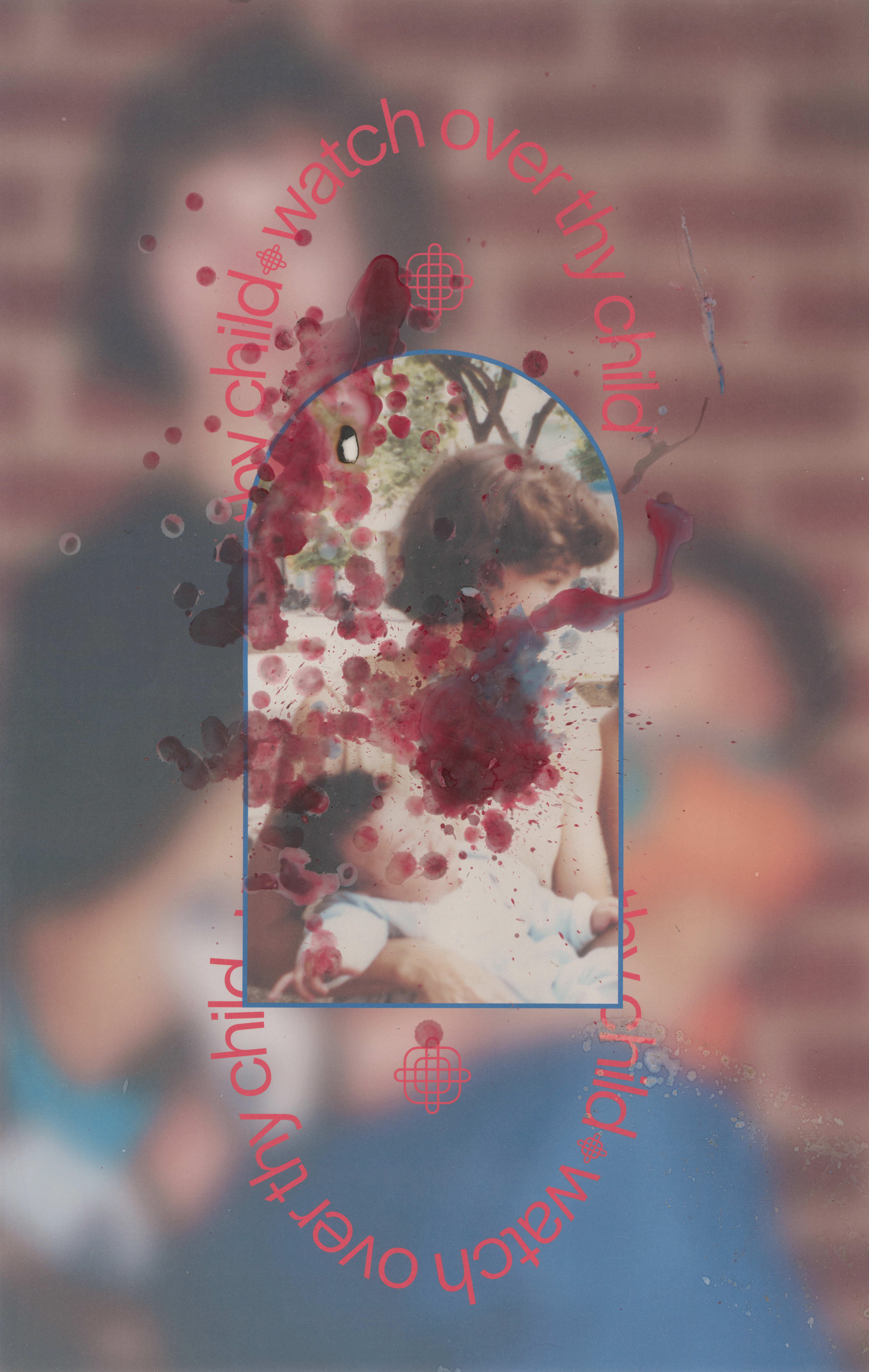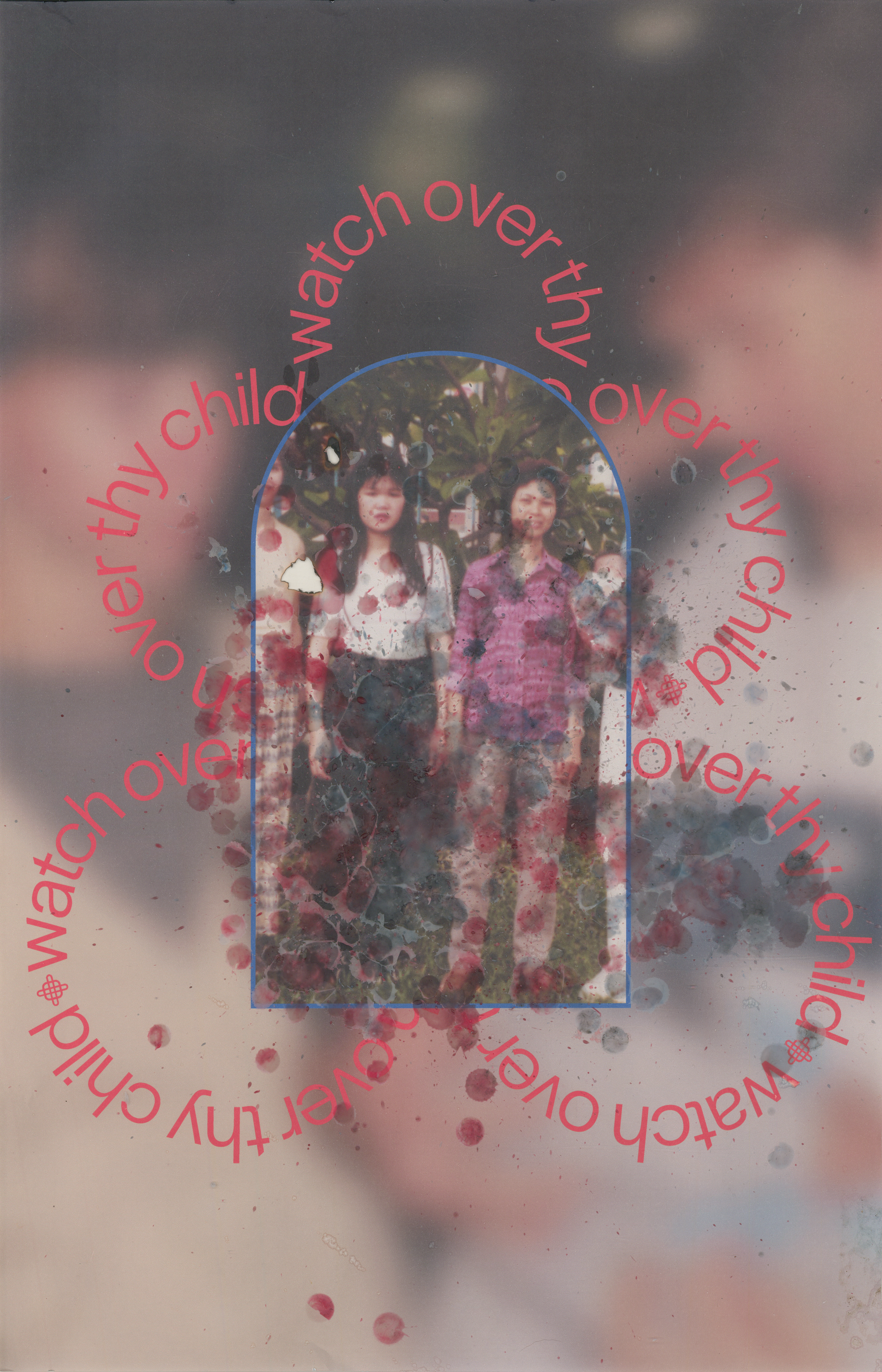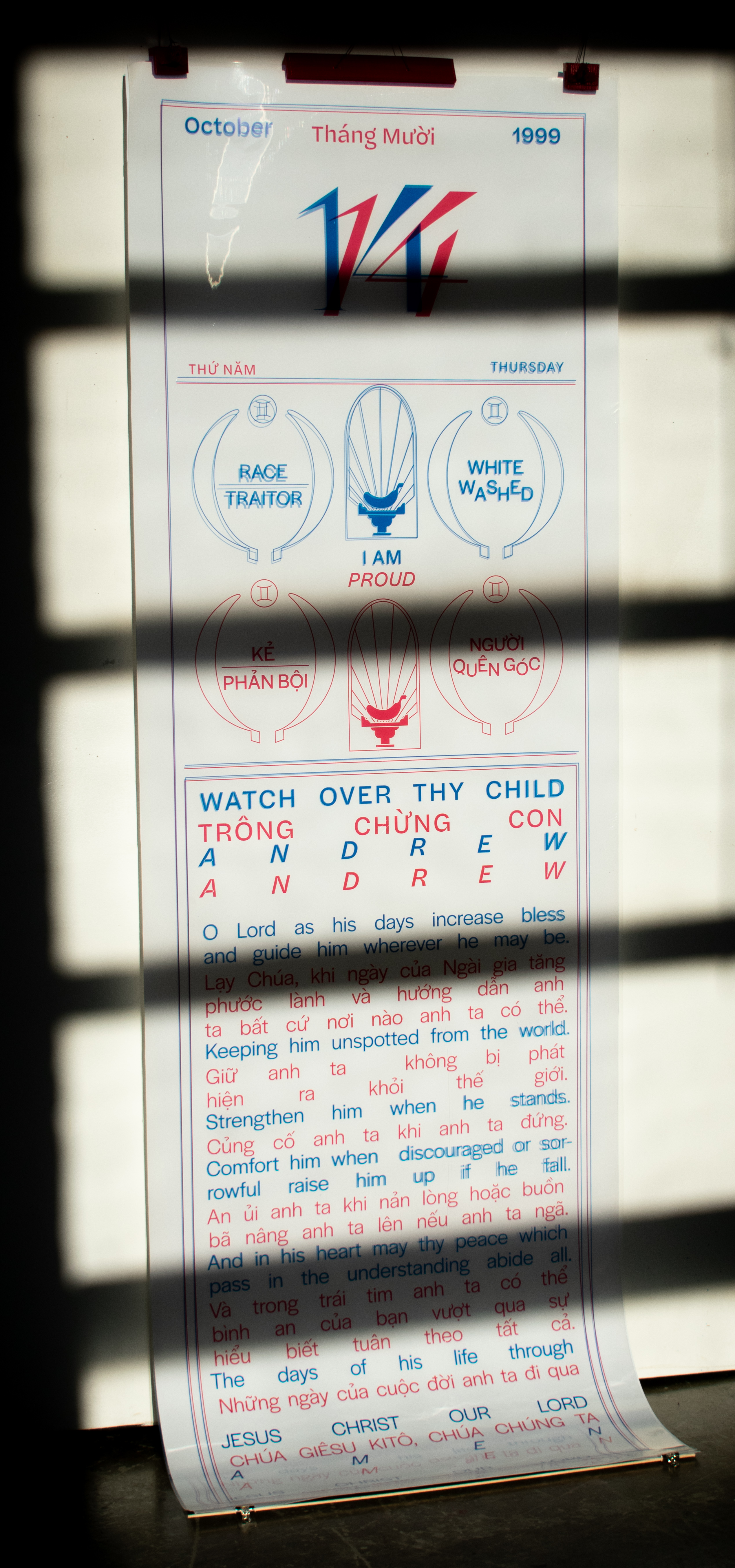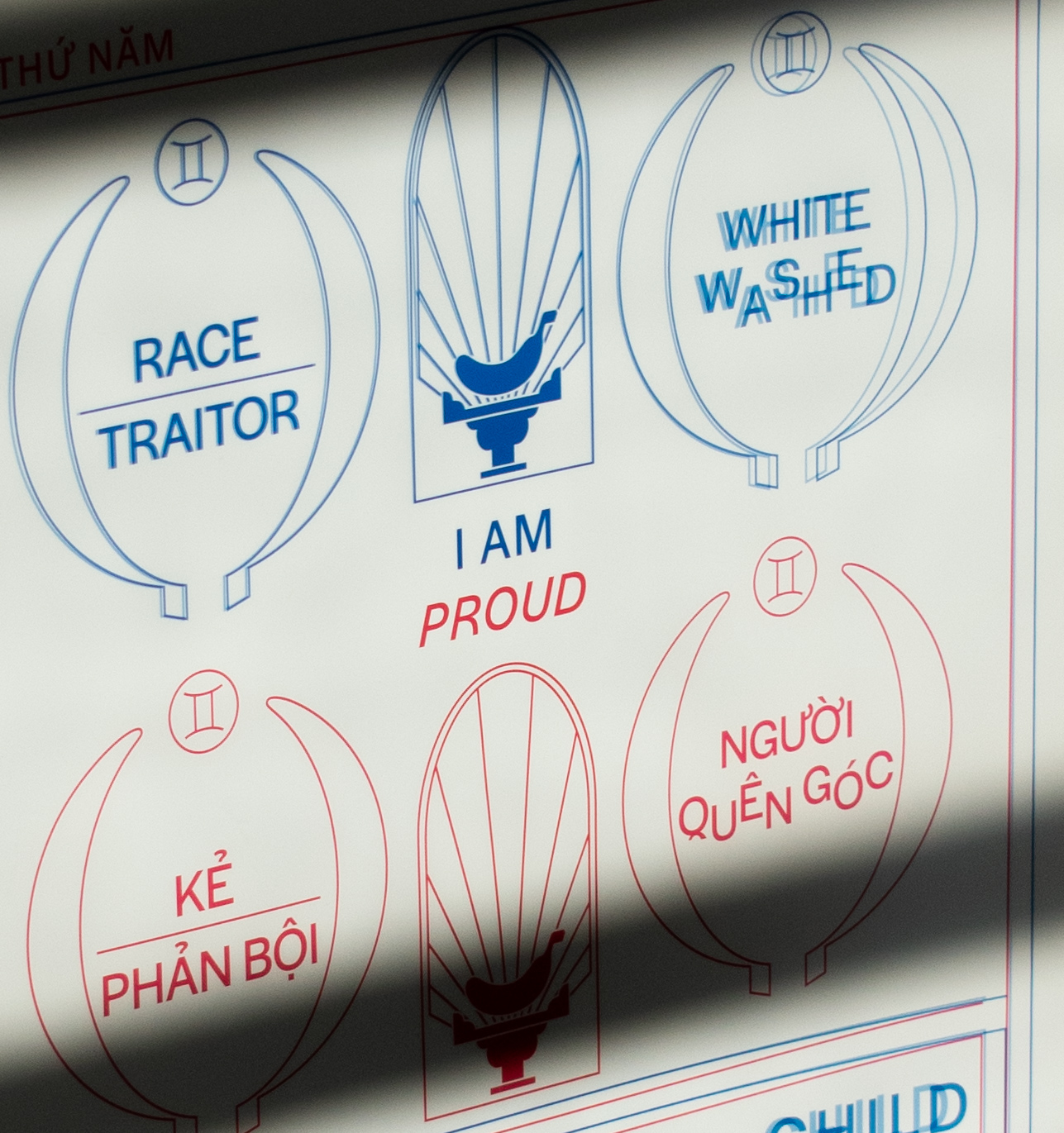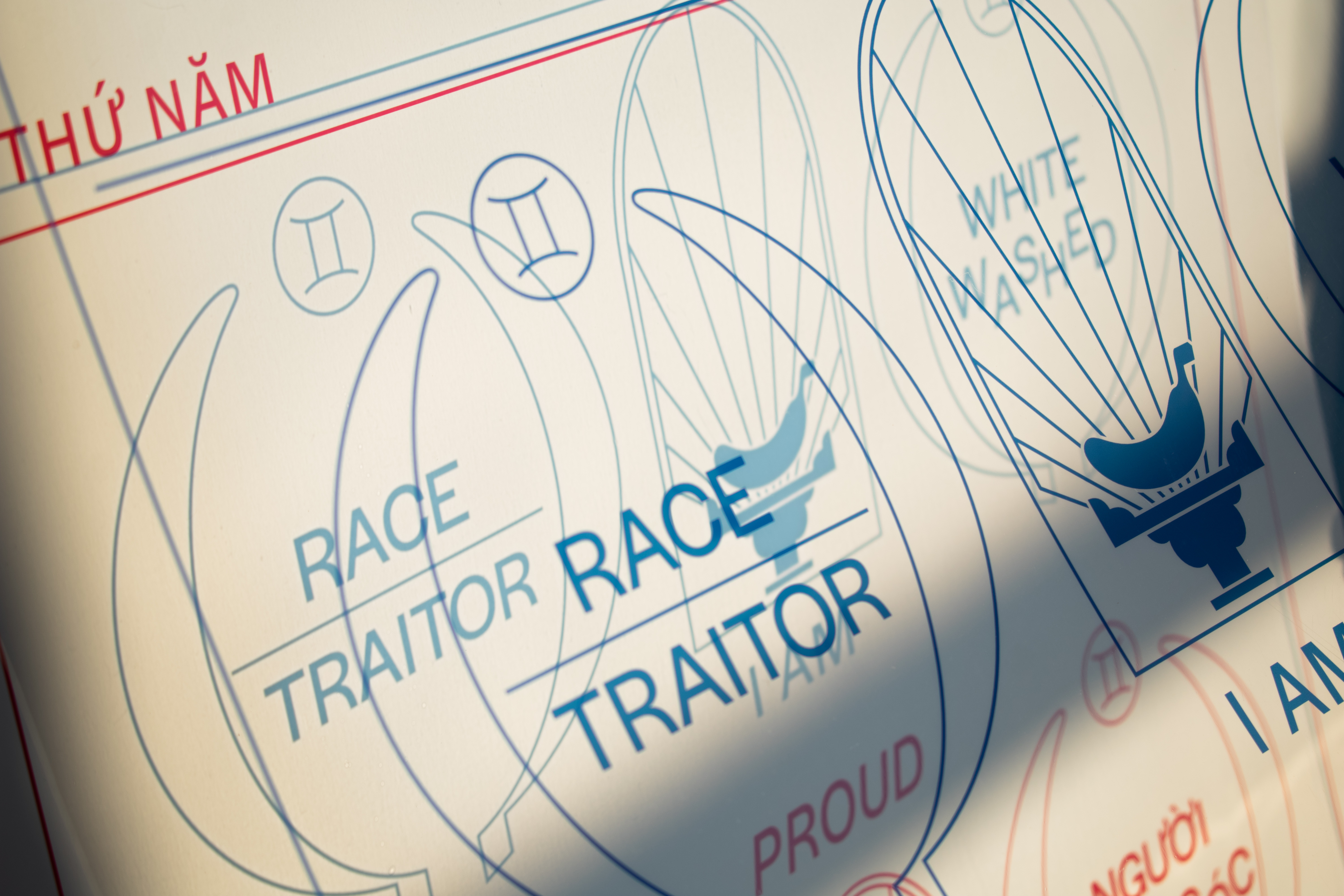AUTONOMY
A collection of responses and reactions to Eric Hu’s opinion on Asian cultural values (which typically involves focusing on the family) and becoming autonomous. This short book was for my class with Nontsikelo Mutiti, it accompanied
my presentation where I provided a platform for others to share their relationships with their parents. Cảm ơn to those that shared their insight and opinions.
WATCH OVER THY CHILD
Split at birth. A prayer for my provenance. An attempt to reconnect.
•Watch over thy child as his days increase bless and guide him wherever he may be • Keeping him unspotted from the world • Strengthen him when he stands • Comfort him when discouraged or sorrowful raise him up if he fall • And in his
heart may thy peace which pass in the understanding abide all •
RECLAMATION
A dedication to the reclamation of the derogatory term, banana. Taking inspiration from the design and function of an Asian calendar and how it embodies multiple elements, various languages. The text is from a Christian prayer that
hangs above my bed, the date is my Gotcha day, and the imagery is the reclamation.
Who inspires you?
A lot of people inspire me:
- Eric Hu
- Ryan Rich
- Jeffrey Pohanka
Are you a minority?
I’m an adopted Asian-American (Vietnamese).
What does being a minority means to you?
Being a minority means educating myself about Asian traditions, history, and culture.
How have you represented being a minority?
I represent my ethnicity through the clothing I wear and through the art I create. Recently, I’ve been trying to wear clothes that are made by Asian-American studios and artists
(88 Rising,
Black Bean Grocery, and
Sundae School)
When I create art, I mainly focus on creating work that educates me about Asian culture or produce content that publicizes memorabilia about my adoption.
When did you feel the most separated from the majority?
I always feel separated from the majority, but never part of the minority. I’m an in-betweener, but identifying as an in-betweener also makes me a minority. As an adopted Asian-American, I grew up around white people and became separated
from my Asian identity. In college, I became closer with my Asian identity. I am not Asian, I am not American, I am Asian-American.
When did the majority attempt to suppress you?
Being an adopted Asian American who grew up in an upper-middle-class family comes with privilege. I haven’t had a lot of memories of the majority attempting to suppress me (other than the rare racist squinting their eyes at me), but at
the same time I grew up in schools and communities where there was a white majority. It might not be active suppression, but I think it’s an “invisible suppression” that has made me ignorant of my Asian identity when I was growing up.
Diversity was very much not-included in my neighborhood.
How does your inspiration further your art practice?
"Anonymous asked: As a student, how can you consciously block out influences if they tend to overtake the spirit of your work? I've been accused of ripping a style off thoughtlessly (they were entirely right in saying so), while it was
completely subconscious. How do you work through this period of mimicry with honesty and sensitivity?
I don’t think you should block out your influences—I think you should do the opposite and try to get immersed fully immersed in them. If you’re influenced by a work of art and make something that is visually similar—then you’ve probably
digested it only at a surface level. You see red and you make red. The solution isn’t to disengage but to inquire further—much further. Asking “why is this red?” is one of the most worthwhile questions you can ask. If you see an image
you like, don’t just bookmark it. Find out who made it. Find out more about the artist—read about what influenced them, read about where and how they grew up, try to reach out to them personally if they’re alive. Does the work belong to
part of a larger movement? Learn about the movement. Learn about the artists’ contemporaries and dive just as deeply into their work as that of the artist who introduced you to them in the first place. If you truly learn what motivated
an artist to make the work they do, you will find a way to examine them better with your own experiences and perspectives and you will find an output that is more sincere to you."
— Eric Hu
I would use inspiration because I lacked any understanding of what layout or typography was. Now, I use it to appreciate and drive my work. I used to be insecure that all of my work was created from heavy inspiration, but ever since I
read the quote above I have fully accepted it as a part of my process. The most important part of being an artist is to be able to be inspired and learn from anyone and how one applies that to their practice. I’ve gotten inspiration from
music reviews, from talking to random people, from anything.
Do you hold any responsibility as a minority?
As I become more aware of my identity I’m starting to realize that I do have responsibility. I have responsibility to root for the Asian that gets a role in a Hollywood movie, to condone anyone that is racist against Asians, to do what I
can to raise Asian culture.
What are the biggest challenges you face as a minority?
The biggest challenge I face is realizing that despite me being Asian, I still grew up in a white household with a different culture and with very few Asian influences. My biggest challenge is realizing my privilege and taking a step back
to educate myself on the history, the traditions, and grasping the Asian culture.
Do you feel like being in a minority has inspired you as an artist?
“Look, at the end of the day, everybody goes through tough shit. Everybody has people in their lives that unfortunately die, people have horrible things happen to them, that itself does not make a person or a person’s experience unique
or an album interesting. It’s really how that artist applies that experience (if they choose to make art about it) how they lay that experience into whatever medium it is they’re working with.”
— Anthony Fantano
My art is driven by trying to grapple with and combining my Asian and my American identity. Trying to educate myself on the Asian culture that I used to ignore. Becoming self-aware and realizing what toxic attributes I inherited by living
in and being a part of white spaces. How I apply my experiences in my art. This is my way of really looking at myself, my past, and my context.
In which way do you show censorship in your work?
I don’t really show censorship in my work. I create to educate myself. It’s more of what happens once I execute my work. Whenever I create projects for classes that are taking heavy iconography and references from Asian culture the class
is usually silent. This fact that there is a silence shows that there’s not enough diversity and representation in mainstream media. Like Anthony Fantano said, just because I’m an adopted Asian-American does not mean my experience is
unique. It does not mean you can’t ask or talk about my experience as Asian-American.
The silence is frustrating. When there is silence I have to look towards either the professor or the other Asians in the room. Having a silent crit is the equivalent of eating at a three-star Michelin restaurant but not being content.
I’ve learned to get a response by asking specific questions about my work, but I don’t feel the need to show censorship in my work. So long as I keep creating art out of the mainstream, the stuff that’s not represented then I’m slowly
chipping
away at a segregated society.

